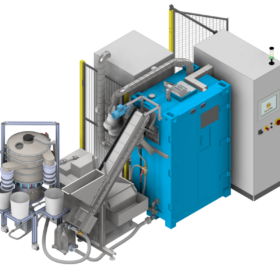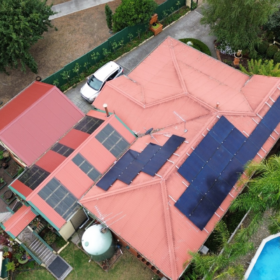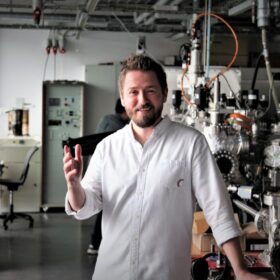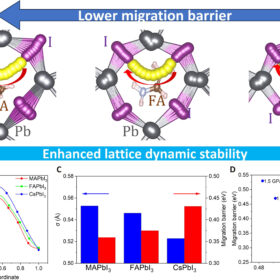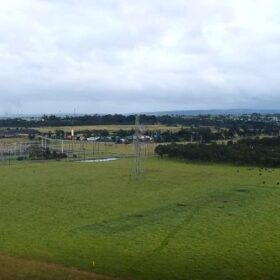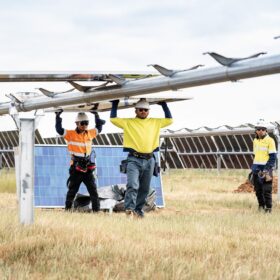PV module recycling tech based on electrohydraulic shockwave fragmentation
An international research team has developed a new machine that utilises shockwaves to separate the different materials of a PV module. Chemical processes can be further used to extract silicon and silver. Results show the recovery of more than 99.5% of the original weight of the panels.
Scientists propose novel Moon perovskite cell manufacturing strategy
German scientists have proposed power generation for future habitats on the moon could be achieved by manufacturing halide perovskite cells locally, using regolith-based moonglass.
Canadian Solar’s first anti-hail module installation set for Flow Power project
Canadian Solar’s anti-hail technology is to be installed at a new South Australian solar battery energy storage project by Flow Power in the Coonawarra wine region, 370 kilometres southeast of Adelaide.
PVH launches foundation system for solar installations on complex terrain
PV Hardware (PVH) has released PVH Terra, a foundation system designed to improve solar plant installation on challenging terrain. The system aims to improve stability in expansive soils, frost-affected areas, and sites with poor geotechnical conditions while reducing costs and environmental impact.
Gstar’s new silicon wafer plant receives first monocrystalline growth furnaces
Singapore-headquartered solar manufacturer Gstar Solar has received the first of 120 monocrystalline growth furnaces to be delivered to its new 3 GW wafer manufacturing facility in Indonesia.
GoodWe powers Victorian wildlife rescuers with donated solar system
Solar energy solutions companies, GoodWe and Six Star Plus, have teamed up with electrical wholesaler AWM Greentech Clayton to install an 8.4 kW solar system in support of a Victorian wildlife rescue operation.
Jinko and Trina Vietnam manufacturing exports attract new US tariffs
The U.S. Department of Commerce dramatically increased tariffs on imports from Chinese solar producers operating in Vietnam after the agency concluded that China is subsidizing raw materials for its companies to use in their Vietnamese factories.
Solar’s exponential growth disrupts global energy markets in 2024
Australian think tank Climate Energy Finance (CEF) says global energy markets are being reshaped by solar’s disruption, which is happening at speed, turbocharged by battery energy storage system firming.
Transparent tandem solar cell hits record 12.3% efficiency
A global research team has developed a tandem solar cell with 30% transparency by combining perovskite and organic layers, achieving a record 12.3% efficiency for transparent solar cells.
Sydney researchers advance halide perovskite cell stabilisation
University of Sydney researchers have suppressed ion migration in halide perovskites specifically at the B-site, paving a way for cell stabilisation by minimising energy loss and improving performance reliability.
